Abstract
DN-9550 [(6R, 7R)-7-[(Z)-2-(2-aminothiazol-4-yl)-2-(1H-imidazol-4-yl) methoxyiminoacetamido]-3-[(1-pyridinio)methyl]-8-oxo-5-thia -1-azabicyclo methyl]-8-oxo-5-thia-1-azabicyclo[4.2.0]oct-2-ene-2-carboxylate hydrochloride] is a new semisynthetic cephalosporin with a broad spectrum of antibacterial activity against gram-positive and gram-negative bacteria. The activity of DN-9550 against most species of the family Enterobacteriaceae was roughly comparable to that of ceftazidime, slightly lower than that of cefotaxime, and far exceeded that of cefoperazone. Against Citrobacter freundii, Enterobacter cloacae, and Serratia marcescens, DN-9550 was more active than ceftazidime and cefotaxime. DN-9550 and ceftazidime were significantly more active than cefotaxime against Pseudomonas aeruginosa, but DN-9550 and cefotaxime were clearly more active than ceftazidime against staphylococci and streptococci. Haemophilus influenzae and Neisseria gonorrhoeae were also highly susceptible to DN-9550, but Bacteroides fragilis was generally not susceptible to the compound. DN-9550 was stable to various types of beta-lactamases and had high affinities for penicillin-binding protein 3 of both Escherichia coli and P. aeruginosa. When DN-9550 was administered subcutaneously to mice experimentally infected with Staphylococcus aureus, Streptococcus pyogenes, Escherichia coli, Klebsiella pneumoniae, Serratia marcescens, or Pseudomonas aeruginosa, its efficacy well reflected its in vitro potency.
Full text
PDF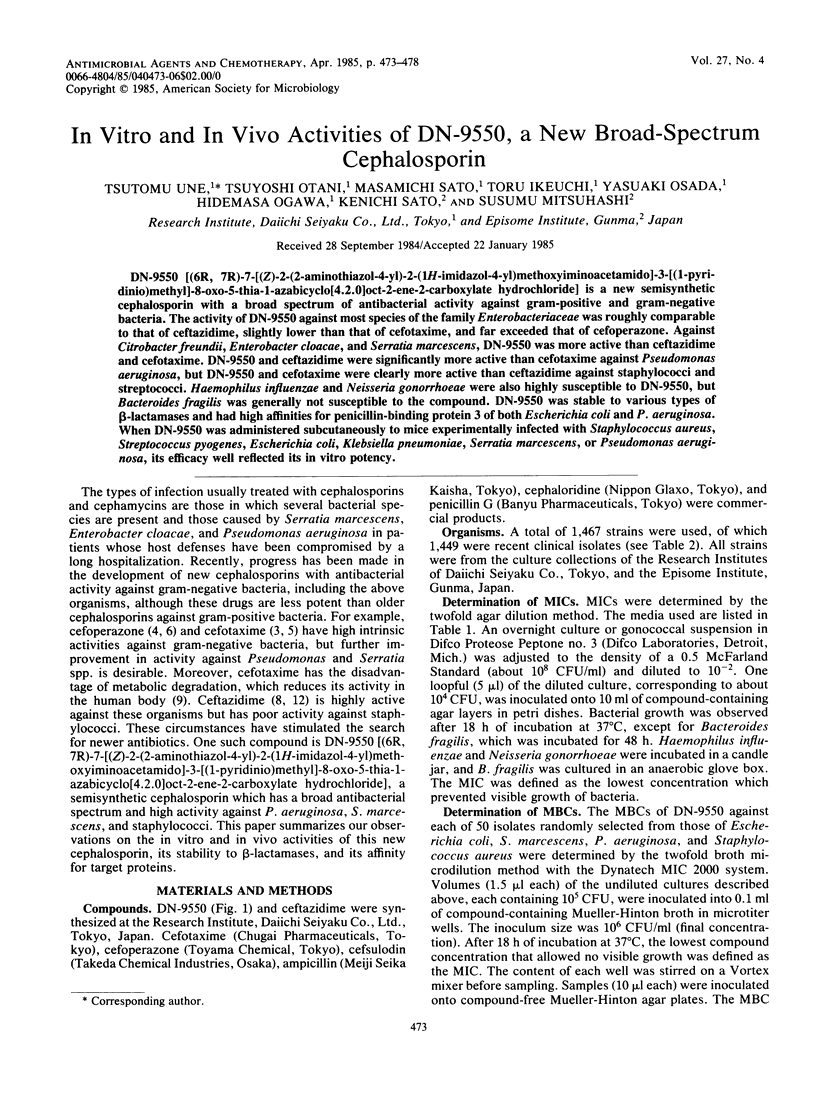
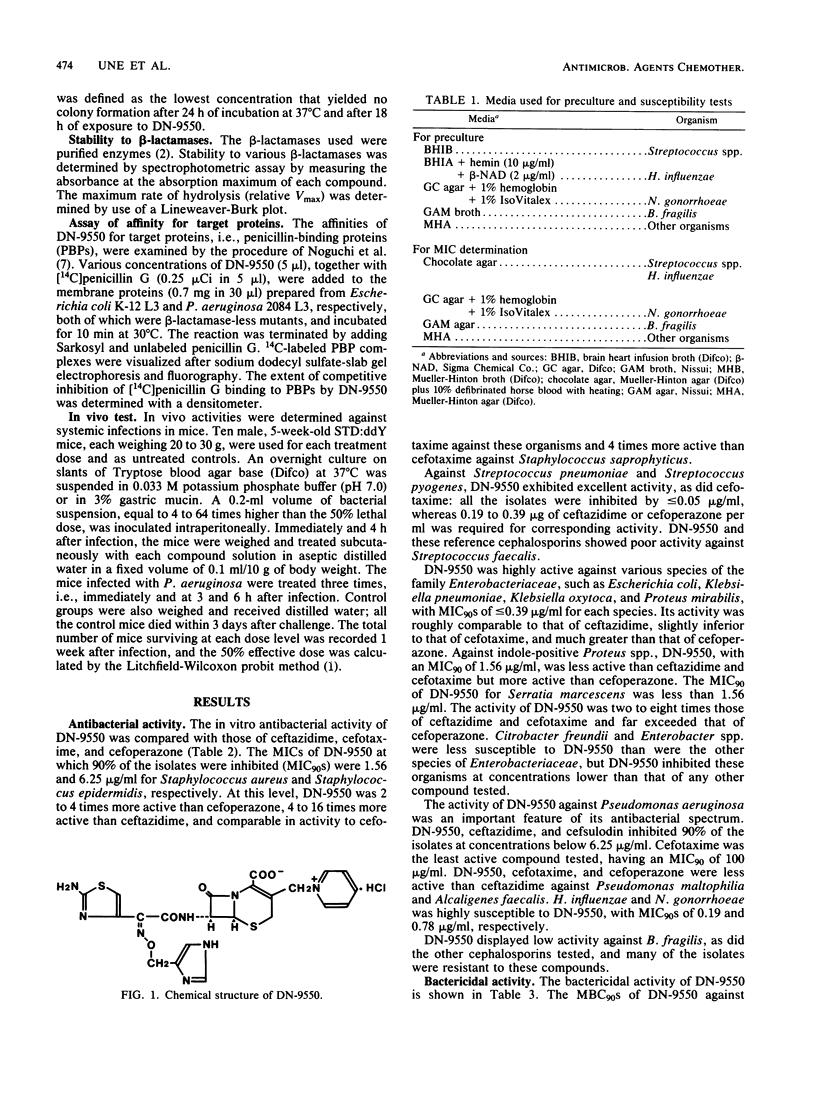

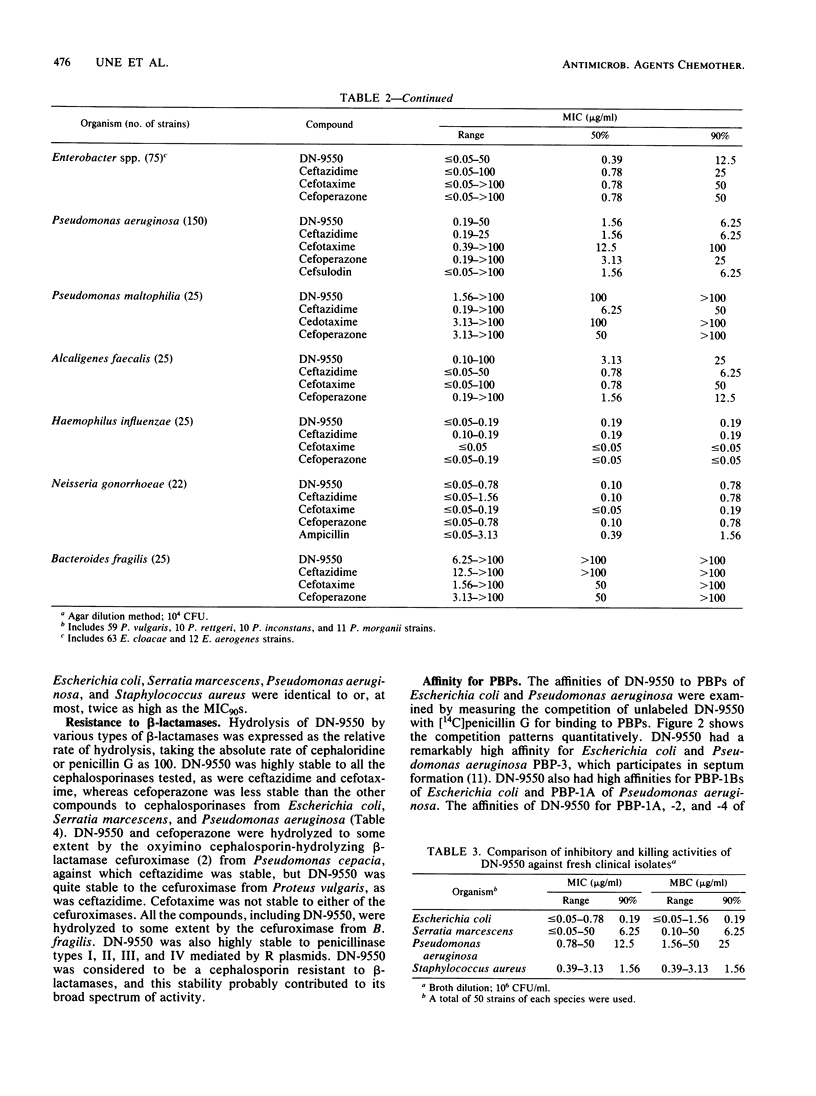
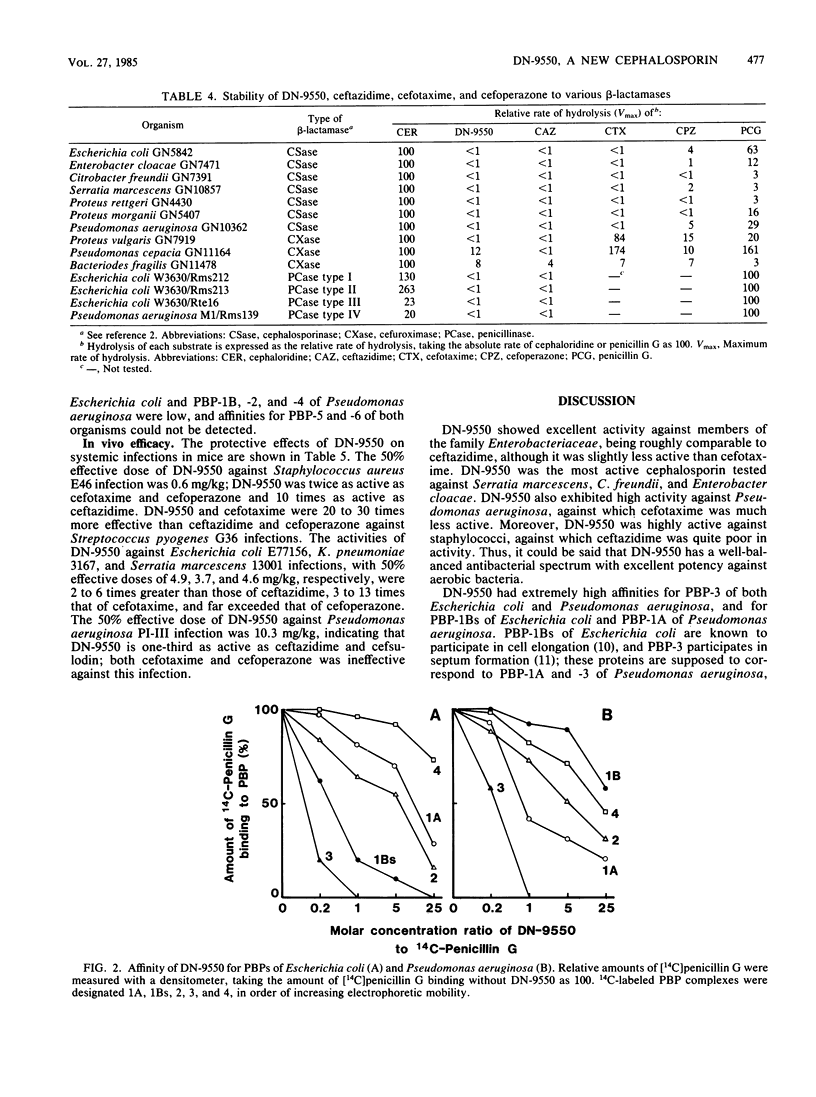
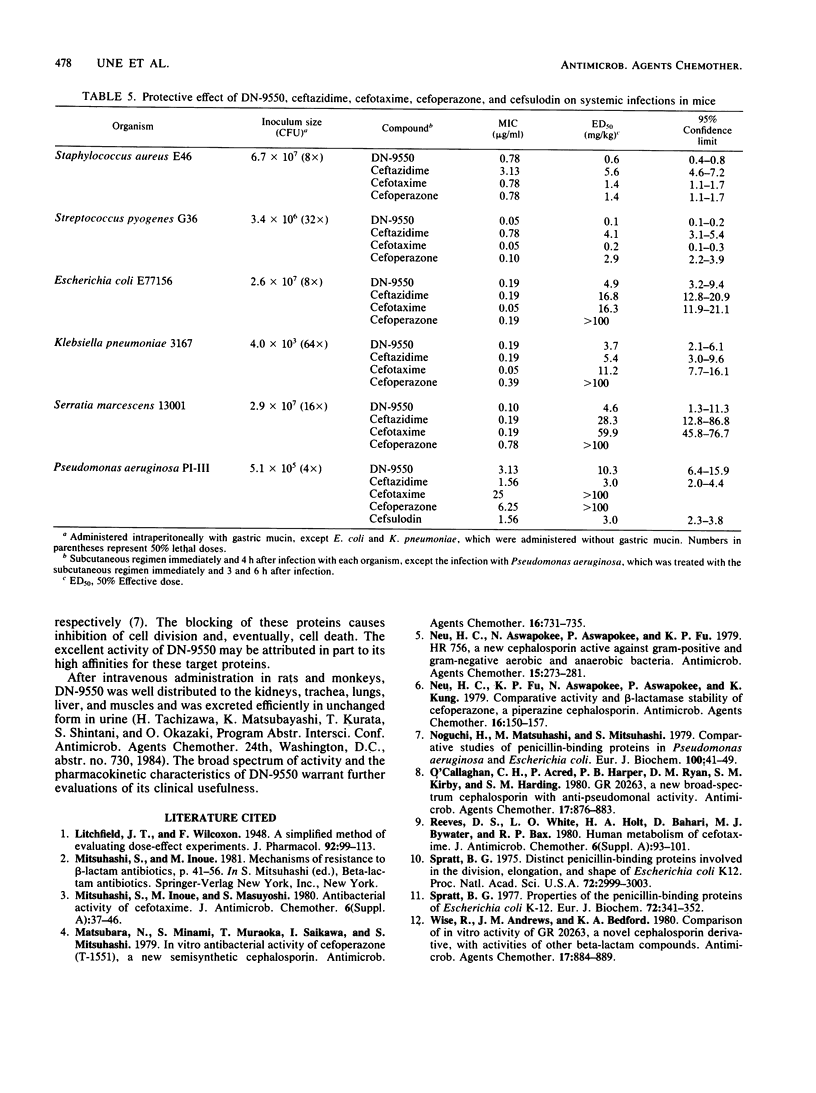
Selected References
These references are in PubMed. This may not be the complete list of references from this article.
- Matsubara N., Minami S., Muraoka T., Saikawa I., Mitsuhashi S. In vitro antibacterial activity of cefoperazone (T-1551), a new semisynthetic cephalosporin. Antimicrob Agents Chemother. 1979 Dec;16(6):731–735. doi: 10.1128/aac.16.6.731. [DOI] [PMC free article] [PubMed] [Google Scholar]
- Mitsuhashi S., Inoue M., Masuyoshi S. Antibacterial activity of cefotaxime. J Antimicrob Chemother. 1980 Sep;6 (Suppl A):37–46. doi: 10.1093/jac/6.suppl_a.37. [DOI] [PubMed] [Google Scholar]
- Neu H. C., Aswapokee N., Aswapokee P., Fu K. P. HR 756, a new cephalosporin active against gram-positive and gram-negative aerobic and anaerobic bacteria. Antimicrob Agents Chemother. 1979 Feb;15(2):273–281. doi: 10.1128/aac.15.2.273. [DOI] [PMC free article] [PubMed] [Google Scholar]
- Neu H. C., Fu K. P., Aswapokee N., Aswapokee P., Kung K. Comparative activity and beta-lactamase stability of cefoperazone, a piperazine cephalosporin. Antimicrob Agents Chemother. 1979 Aug;16(2):150–157. doi: 10.1128/aac.16.2.150. [DOI] [PMC free article] [PubMed] [Google Scholar]
- Noguchi H., Matsuhashi M., Mitsuhashi S. Comparative studies of penicillin-binding proteins in Pseudomonas aeruginosa and Escherichia coli. Eur J Biochem. 1979 Oct;100(1):41–49. doi: 10.1111/j.1432-1033.1979.tb02031.x. [DOI] [PubMed] [Google Scholar]
- O'Callaghan C. H., Acred P., Harper P. B., Ryan D. M., Kirby S. M., Harding S. M. GR 20263, a new broad-spectrum cephalosporin with anti-pseudomonal activity. Antimicrob Agents Chemother. 1980 May;17(5):876–883. doi: 10.1128/aac.17.5.876. [DOI] [PMC free article] [PubMed] [Google Scholar]
- Reeves D. S., White L. O., Holt H. A., Bahari D., Bywater M. J., Bax R. P. Human metabolism of cefotaxime. J Antimicrob Chemother. 1980 Sep;6 (Suppl A):93–101. doi: 10.1093/jac/6.suppl_a.93. [DOI] [PubMed] [Google Scholar]
- Spratt B. G. Distinct penicillin binding proteins involved in the division, elongation, and shape of Escherichia coli K12. Proc Natl Acad Sci U S A. 1975 Aug;72(8):2999–3003. doi: 10.1073/pnas.72.8.2999. [DOI] [PMC free article] [PubMed] [Google Scholar]
- Spratt B. G. Properties of the penicillin-binding proteins of Escherichia coli K12,. Eur J Biochem. 1977 Jan;72(2):341–352. doi: 10.1111/j.1432-1033.1977.tb11258.x. [DOI] [PubMed] [Google Scholar]
- Wise R., Andrews J. M., Bedford K. A. Comparison of in vitro activity of GR 20263, a novel cephalosporin derivative, with activities of other beta-lactam compounds. Antimicrob Agents Chemother. 1980 May;17(5):884–889. doi: 10.1128/aac.17.5.884. [DOI] [PMC free article] [PubMed] [Google Scholar]


